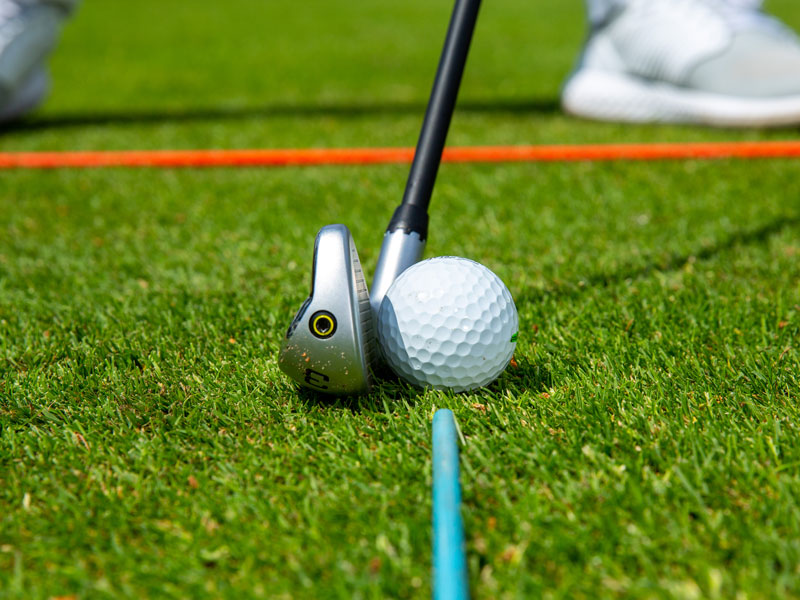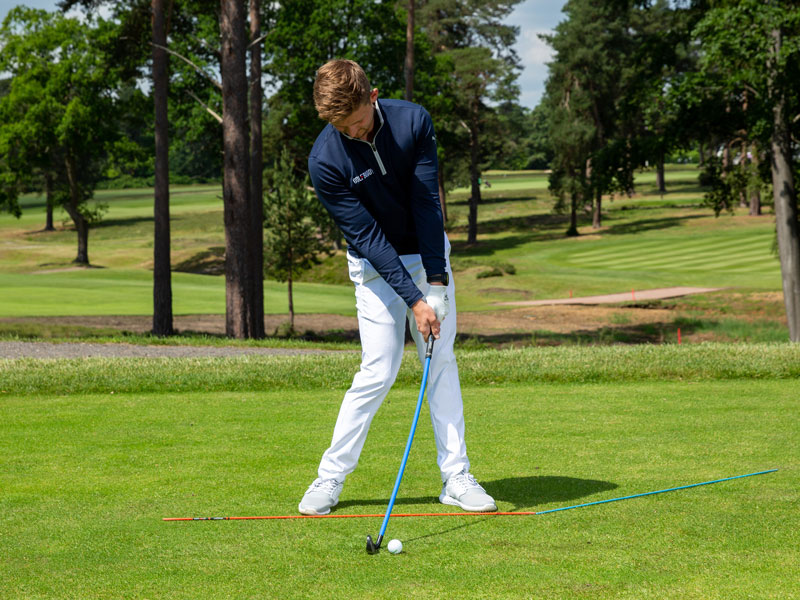Golf Impact Position Tips
Improving your golf impact position will lead to greater ball-striking consistency. Here are some tips...


The golf impact position holds the key to longer, straighter shots. We've added Alex Elliott's video to an article from top coach Gary Alliss to give you all the information you need! Check it out below...
What we’re talking about is the area – the hitting area if you like – that passes through impact. During this phase of the swing it’s important to understand how you should be releasing, what you should be releasing, and why.
The most important elements are the angles in the wrists and the right elbow, and your forearm rotation through impact, and indeed beyond, as club and ball travel together for a few milliseconds and you can still influence the ball in that split second.
Take a look at Alex Elliott's golf impact position drills that accompany this article for some great tips on how to improve.
Common mistakes
1. Early release
Some people get into a nice position at the top, but then release too early, casting the club, letting it overtake the hands and thinning it, topping it or catching the ground behind the ball.
Subscribe to the Golf Monthly newsletter to stay up to date with all the latest tour news, equipment news, reviews, head-to-heads and buyer’s guides from our team of experienced experts.
Even if they do manage to get the ball, the early release leads to the classic ‘chicken wing’ position, with shots flying all over the place. This ruins your ability to create lag for power.
2. Early weight shift
Others think they need a huge sideways movement at the start of the downswing in a bid to create a downward angle of attack for a pure strike. They over-do it. They drive out of their right heel on to their left toes, blasting it miles right, or rescue it with the wrists, shutting the clubface too quickly and hooking wildly.
The right sequence
We talk about rhythm and timing, but for me it’s more about sequencing on the way down. You work from the ground up. The feet work, then go quiet, without stopping; the hips then work, ‘settling’ gently back down to keep the weight nice and even, before going quiet, putting the hands and arms in position to swish the club through.
If that doesn’t happen in sequence, you can move your shoulders and shift your weight all you like, but the ball won’t go where you want it to.

Wrists and elbows
Coming into the golf impact position, you should still have angles in your wrists, and your right elbow should be ‘soft’ and bent as at set-up. As you come down into impact, rotate the forearms and straighten the wrists.
At the moment the club hits the ball, the right elbow should still be very slightly flexed, but a split second later the forearms should rotate and the right elbow should straighten out. That is the moment of full release, helping carry the swing up to a full finish.

Location: Various (south coast)
Gary began his PGA training at Trevose, where, in 1983, he became head professional. In 2005, he joined The Belfry, where he managed a team of 35 PGA professionals. He's travelled the world several times over, working extensively in Slovakia, Ghana and Israel, and from January 2022 he will be will be taking over his father's position as patron of England and Wales Blind Golf Society.
Teaching philosophy:
Sound fundamentals. Aim and alignment, grip where the hands work together; good posture to promote balance; and set a sound swing plane. The game is about moving the ball forwards. The ball doesn't know who's holding the stick - all it knows and reacts to is impact. Get impact correct consistently and you can play golf quite well.
Greatest teaching influence:
My grandad, Percy. He taught me to play and a great deal of what I learned from him in the 1950s I still tell pupils today. And John Jacobs and Alex Hay, both of whom delivered the message in simple language. They were excellent demonstrators and wonderfully articulate.
Greatest success story:
A lady (Valerie Stock) came to me fearing she'd never see her husband during their retirement if she didn't learn to play. She booked two lessons per week for three months, but she just couldn't hit a ball. Suddenly she stopped coming. Four weeks later, and after practising in her garden, she rebooked - and sure enough she could play. Before we could progress, she emigrated. Three years later, Valerie walked into the golf shop and told me she was playing off 19, saying everything I told her just took a long time to process!